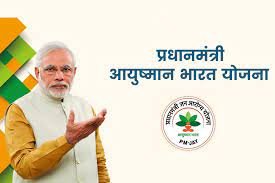
In India, access to quality healthcare has long been a challenge, particularly for economically disadvantaged individuals. Recognizing this critical issue, the Indian government has implemented various initiatives aimed at improving healthcare accessibility and affordability for all citizens. Among these initiatives, the Pradhan Mantri Arogya Mitra (PMAM) program stands out as a significant step towards ensuring that no one is left behind when it comes to healthcare.
Introduction to Pradhan Mantri Arogya Mitra (PMAM)
Pradhan Mantri Arogya Mitra, launched under the Ayushman Bharat Yojana, is a scheme designed to provide support and assistance to beneficiaries of the Ayushman Bharat Pradhan Mantri Jan Arogya Yojana (AB-PMJAY), also known as the Ayushman Bharat scheme. PMAMs serve as facilitators and guides for patients seeking treatment under the Ayushman Bharat scheme, helping them navigate the complexities of the healthcare system and ensuring a smooth and hassle-free experience.
Objectives of Pradhan Mantri Arogya Mitra
The primary objectives of the Pradhan Mantri Arogya Mitra program include:
- Assistance to Patients: PMAMs act as intermediaries between patients and healthcare providers, assisting patients in availing the benefits entitled to them under the Ayushman Bharat scheme.
- Awareness and Education: PMAMs play a crucial role in raising awareness about the Ayushman Bharat scheme and its benefits among eligible beneficiaries, especially in rural and remote areas where access to information may be limited.
- Ensuring Quality Care: PMAMs help ensure that patients receive quality healthcare services by facilitating their interaction with empanelled hospitals and monitoring the quality of care provided.
- Reducing Financial Burden: By guiding patients through the process of availing cashless treatment under the Ayushman Bharat scheme, PMAMs help alleviate the financial burden on vulnerable households facing healthcare expenses.
Role and Responsibilities of Pradhan Mantri Arogya Mitra
The role of a Pradhan Mantri Arogya Mitra encompasses various responsibilities aimed at providing comprehensive support to beneficiaries of the Ayushman Bharat scheme. Some of the key responsibilities include:
- Patient Registration and Verification: PMAMs assist patients in the registration process for the Ayushman Bharat scheme, verifying their eligibility and ensuring that all necessary documents are in place.
- Facilitation of Treatment: PMAMs help patients identify empanelled hospitals where they can receive treatment under the Ayushman Bharat scheme. They facilitate the admission process and coordinate with hospital authorities to ensure a seamless experience for patients.
- Guidance on Benefits and Entitlements: PMAMs educate patients about the benefits and entitlements available to them under the Ayushman Bharat scheme, including cashless treatment, pre-authorization requirements, and coverage of expenses such as hospitalization, surgery, and medication.
- Resolution of Grievances: PMAMs serve as a point of contact for patients facing any issues or grievances related to their treatment or the Ayushman Bharat scheme. They help resolve these grievances in a timely and efficient manner, ensuring that patients receive the necessary support and assistance.
- Monitoring and Evaluation: PMAMs play a crucial role in monitoring the implementation of the Ayushman Bharat scheme at the grassroots level, providing valuable feedback to policymakers and healthcare authorities for continuous improvement.
Impact of Pradhan Mantri Arogya Mitra
Since its inception, the Pradhan Mantri Arogya Mitra program has made significant strides in enhancing healthcare access and improving health outcomes for millions of Indians. Some of the key impacts of the PMAM initiative include:
- Increased Awareness and Enrollment: PMAMs have played a pivotal role in raising awareness about the Ayushman Bharat scheme, resulting in increased enrollment of beneficiaries from marginalized and underserved communities.
- Improved Healthcare Utilization: By guiding patients through the process of availing healthcare services under the Ayushman Bharat scheme, PMAMs have contributed to increased healthcare utilization among eligible beneficiaries, particularly in rural and remote areas.
- Enhanced Patient Experience: The presence of PMAMs has significantly improved the patient experience by providing personalized assistance and support throughout the treatment journey, thereby reducing stress and anxiety among patients and their families.
- Effective Grievance Redressal: PMAMs have been instrumental in addressing grievances and concerns raised by patients, ensuring prompt resolution and fostering trust in the healthcare system.
- Empowerment of Local Communities: The recruitment of PMAMs from local communities has not only created employment opportunities but has also empowered individuals to become agents of change within their communities, advocating for better healthcare access and services.

Challenges and the Way Forward
Despite its successes, the Pradhan Mantri Arogya Mitra program faces several challenges that need to be addressed to maximize its impact. Some of the key challenges include:
- Capacity Building: Ensuring adequate training and capacity building for PMAMs to effectively carry out their responsibilities and stay updated with evolving healthcare policies and procedures.
- Reach and Coverage: Expanding the reach of PMAMs to remote and underserved areas to ensure that all eligible beneficiaries have access to their services.
- Coordination with Stakeholders: Enhancing coordination and collaboration between PMAMs, healthcare providers, and government agencies to streamline processes and improve the overall efficiency of service delivery.
- Sustainability: Developing strategies to ensure the long-term sustainability of the PMAM program, including adequate funding, continuous monitoring, and evaluation, and integration with existing healthcare systems.
- Technology Integration: Leveraging technology solutions such as mobile applications and telemedicine platforms to enhance the effectiveness and reach of PMAMs, especially in areas with limited access to healthcare infrastructure.
In conclusion, the Pradhan Mantri Arogya Mitra program has emerged as a vital component of India’s efforts to achieve universal healthcare coverage and improve health outcomes for its citizens. By providing personalized assistance and support to beneficiaries of the Ayushman Bharat scheme, PMAMs are playing a crucial role in ensuring that no one is left behind when it comes to accessing quality healthcare. However, addressing the challenges and implementing innovative solutions will be essential to further strengthen the impact and reach of the PMAM initiative, ultimately contributing to the well-being and prosperity of all Indians.
